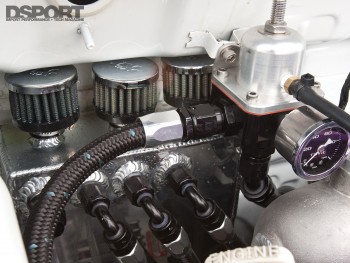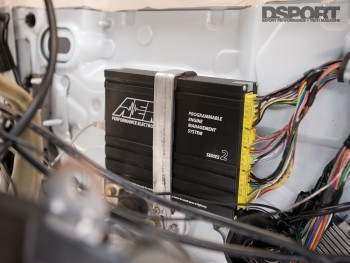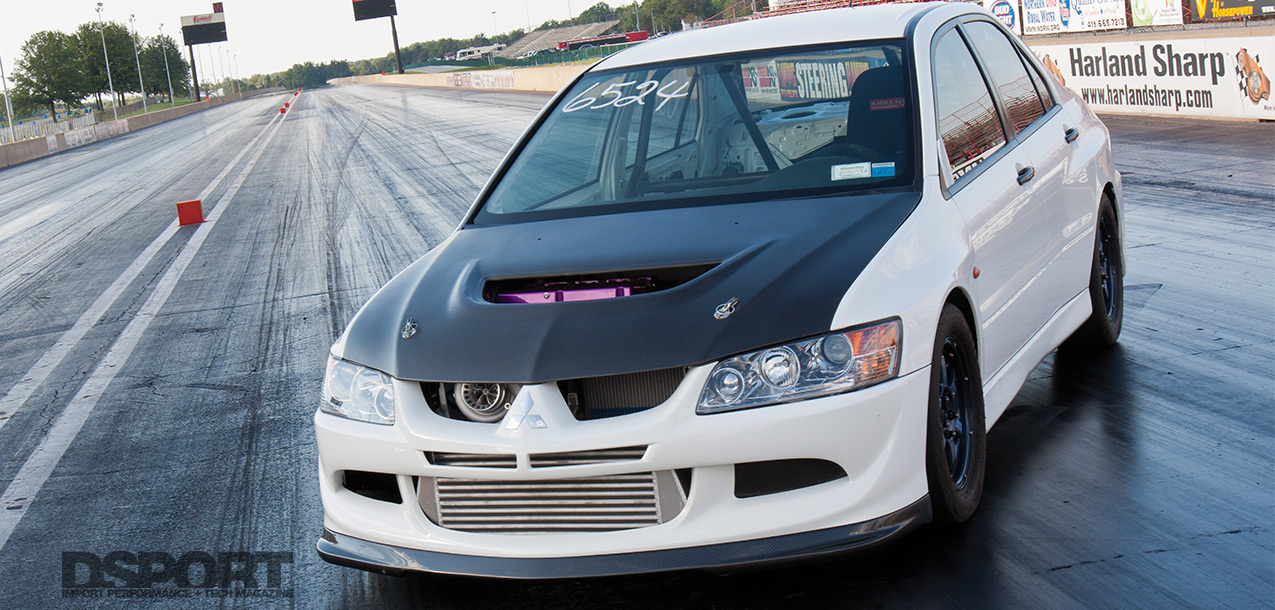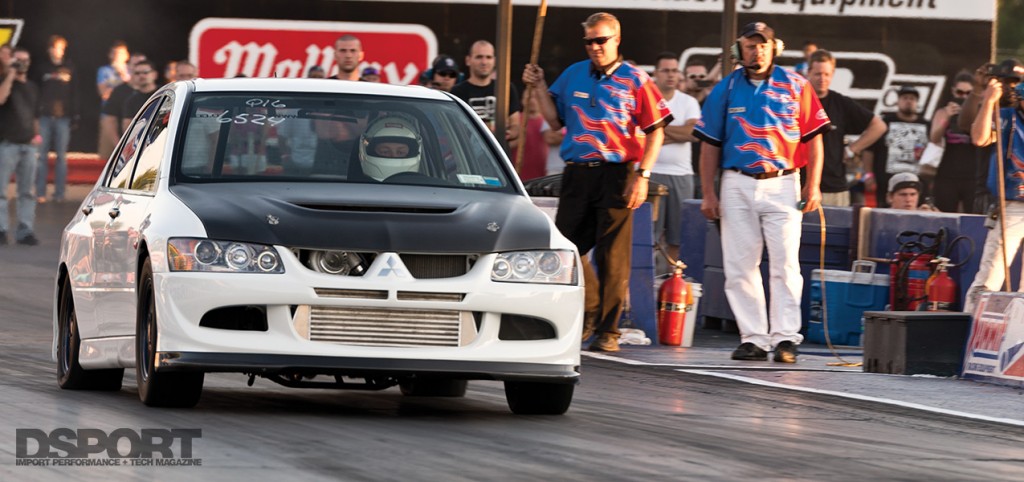Race On Sunday, Sell On Monday
Kapral emphasized that he does not stake STM’s reputation on manufacturer’s claims; he only recommends parts that he’s tested to be effective. When Kapral tested an off-the-shelf Skunk2 intake manifold against the Driven Innovations unit he’d previously used, the Skunk2 manifold fell short on  performance. After porting the Skunk2 manifold, Kapral found the ported Skunk2 manifold yielded the same performance as the Driven Innovations manifold at a lower boost pressure and at a lower cost. While focusing on intake tract improvements, Kapral upgraded from the bored-out factory throttle body to a Full Blown Motorsports 70mm throttle body. Kapral believed this change would reduce the turbulence caused by the transition from the larger intercooler piping to the smaller stock throttle body.
performance. After porting the Skunk2 manifold, Kapral found the ported Skunk2 manifold yielded the same performance as the Driven Innovations manifold at a lower boost pressure and at a lower cost. While focusing on intake tract improvements, Kapral upgraded from the bored-out factory throttle body to a Full Blown Motorsports 70mm throttle body. Kapral believed this change would reduce the turbulence caused by the transition from the larger intercooler piping to the smaller stock throttle body.
No Surplus Supply
With the engine and its ancillary components in place, attention shifted to determining the right fuel and boost combination for optimum output. A Weldon 2345-a fuel pump supplies E85 fuel to four Fuel Injector  Clinic 2,150 cc/min injectors. While Ricer used a dual-pump hanger system which worked well and was quiet enough for street use, Kapral wanted the additional safety provided by a single pump solution. If this single pump failed, fuel supply would fall to zero and the engine would just shut down. On a multi-pump setup, a failure of one pump may not be noticed until its too late. In an effort to further exploit the weight savings of the RS platform, an STM custom fuel cell replaced the factory tank. Reducing the volume of fuel to only a few gallons cell reduced the vehicle weight by 40 pounds compared to the minimum volume that needed to be maintained in the stock tank to avoid fuel starvation.
Clinic 2,150 cc/min injectors. While Ricer used a dual-pump hanger system which worked well and was quiet enough for street use, Kapral wanted the additional safety provided by a single pump solution. If this single pump failed, fuel supply would fall to zero and the engine would just shut down. On a multi-pump setup, a failure of one pump may not be noticed until its too late. In an effort to further exploit the weight savings of the RS platform, an STM custom fuel cell replaced the factory tank. Reducing the volume of fuel to only a few gallons cell reduced the vehicle weight by 40 pounds compared to the minimum volume that needed to be maintained in the stock tank to avoid fuel starvation.
Brains And Brawn
To control the fuel and spark events, Kapral selected an AEM Series-2 engine management system. No stranger to AEM’s EMS system, the Series 2 EMS offers quicker revving, a faster processor and more options than the Series 1. With a Hallman Pro manual boost controller maintaining pressure at 52 psi, Kapral optimized the fuel and ignition tables. The RS responded by spinning the rollers of STM’s AWD  Mustang dynamometer to the tune of 864 horsepower and 608 lb-ft torque to the wheels. Compared to a baseline pull at 210 horsepower for the stock engine, this RS generates more than 4 times the original horsepower to the wheels.
Mustang dynamometer to the tune of 864 horsepower and 608 lb-ft torque to the wheels. Compared to a baseline pull at 210 horsepower for the stock engine, this RS generates more than 4 times the original horsepower to the wheels.



